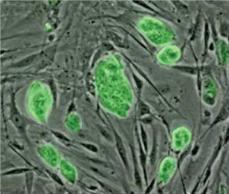“This is a good thing,” said Laura Wrenn, a diabetic first-year. “Lots of people think of stem cell research as killing babies, and now that’s not a factor.” Stem cell research is a science that could in the future rid the world of things like diabetes, Alzheimer’s, and Parkinson’s diseases, as well as help patients with heart conditions and other conditions that require transplants.
It has been a controversial topic in mainstream news since President Bush cut funding for embryonic stem cell research in 2001.
Until recently, the use of embryos was the only way to extract stem cells, a type of cell that can be grown into one of many different organs including muscle, bone, fat, blood vessel, nerve, and liver.
Groups opposed to the practice claim that using the embryos is immoral.
However, the recent discovery of cells similar to stem cells in the amniotic fluid could change the debate entirely.
“This is an ethical advantage,” said Dr. Simon Hoerstrup of the University of Zurich to The New York Times.
“These cells are easier to get, and from acceptable medical procedures (for example, amniocentesis) that are done on a routine basis,” said Anthony Atala, director of the Institute for Regenerative Medicine at Wake Forest University School of Medicine, to The Washington Post.
The cells can be extracted during routine DNA testing to test for parents, without doing any harm to the embryo, which is where the majority of the controversy lies.
“Our hope is that these cells will provide a valuable resource for tissue repair and for engineered organs as well,” Atala said.
The only drawback to these cells, scientists have discovered, is that the cells are not quite as versatile as embryonic stem cells. The amniotic stem cells are designed to grow only into certain types of cells.
Although the controversial nature of this topic hinders the amount of support it can receive from the government, Congress has encouraged privately funded scientists to continue with research despite President Bush’s steps to discourage embryonic stem cell research.
The House of Representatives, under the new Democratic control, recently passed a bill to relax the limits placed on stem cell research by President Bush’s 2001 funding cuts.
According to the Washington Post, 37 Republicans joined 216 Democrats to pass the Stem Cell Research Enhancement Act, which would allow federal funding of research on stem cells from embryos slated for destruction at fertility clinics.
Despite the recent decision in the House, the White House firmly holds its opinion on the subject of stem cell research. The White House has maintained that it does not support any changes in the legislation passed in 2001.
According to a White House report that made it clear that a veto is in store, “the stem cell debate is only the first in what will be an onrushing train of biotechnology challenges in our future. We must establish a constructive precedent here for taking the moral dimensions of these issues seriously.”
Since 2001, federal funding has not been permitted, but states including New Jersey and California showed their support by funding research. Now, in his first address to the Legislature, New York governor Elliott Spitzer wants his state to join in.
Although this new discovery may help calm the debate over the subject, the amniotic stem cells may not be a replacement for the embryonic stem cells.
Scientists say that they still have some work to do to find whether or not the cells will work the way they hope they will.
“This is early work,” Atala said. “It is still several years away before we try this in a patient.”
The hope is that the amniotic stem cells will provide a virtually unlimited supply of stem cells to use in research and curing diseases without confronting the moral issue of using embryonic stem cells.
Atala said a bank with 100,000 specimens of the amniotic stem cells theoretically could supply 99 percent of the U.S. population with perfect genetic matches for transplants, which could open new worlds for the medicine.

